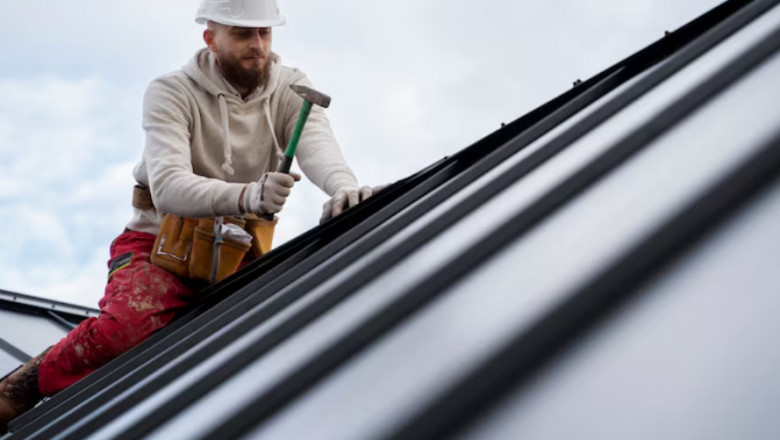views
When it comes to roof repair, choosing the right materials is essential to ensure durability, weather resistance, and cost-effectiveness. Whether fixing a few damaged shingles or planning a more extensive renovation, understanding the best roofing materials available today can help you make an informed decision. Each material type has advantages, making it suitable for different climates, home styles, and budgets.
Asphalt Shingles: Popular and Affordable
Asphalt shingles remain the most widely used roofing material across the United States. Their popularity stems from their affordability, ease of installation, and decent lifespan, typically lasting 15 to 30 years. These shingles are made from a base of fiberglass or organic material, coated in asphalt and topped with mineral granules that provide UV protection.
Asphalt shingles are available in a wide range of colors and styles, allowing homeowners to find a look that complements their exterior design. They perform well in moderate climates and are easy to replace if damaged, making them a practical option for many homeowners.
Metal Roofing: Long-Lasting and Eco-Friendly
Metal roofing is known for its exceptional longevity and resistance to extreme weather conditions. Composed of materials like aluminum, steel, or copper, metal roofs can last 40 to 70 years with minimal maintenance. They are lightweight yet durable, reflecting sunlight to reduce cooling costs during hot summers.
One significant benefit of metal roofing is its recyclability. At the end of their life, the materials can be repurposed rather than going to a landfill. Additionally, many metal roofs are coated with corrosion-resistant finishes, enhancing their appearance and functionality.
Clay and Concrete Tiles: Durable and Distinctive
Clay and concrete tiles offer a highly durable solution for those seeking a more classic or Mediterranean look. These tiles can withstand fire, insects, and harsh weather, with lifespans that often exceed 50 years. Clay tiles are made by baking molded clay, while concrete tiles comprise sand, cement, and water.
Both types provide excellent insulation and are ideal for warm climates due to their ability to regulate temperature. However, homeowners must ensure that their roof structure can support the added weight before installation because they are heavier than other roofing materials.
Slate Roofing: Elegant and Timeless
Slate is a premium roofing material renowned for its natural beauty and unparalleled longevity. Quarried from stone, slate tiles offer a sophisticated appearance and can last over a century when properly maintained. They are resistant to mold, water absorption, and fire, making them one of the most durable materials on the market.
Although slate is one of the more expensive roofing options and requires skilled installation, its aesthetic value and lifespan make it a worthwhile investment for historical or luxury homes.
Wood Shingles and Shakes: Rustic Appeal
Wood shingles and shakes provide a charming, rustic look that blends seamlessly with natural surroundings. Wood roofing adds warmth and character to a home and is typically made from cedar, redwood, or pine. Shingles are machine-cut for a uniform look, while shakes are hand-split, giving them a more textured appearance.
Wood roofs generally last 20 to 40 years, depending on the wood type and maintenance level. They offer natural and biodegradable insulation, but require periodic treatment to prevent moisture damage, mold, and insect infestation.
Synthetic Roofing: Versatile and Innovative
Synthetic roofing materials are gaining traction due to their ability to mimic traditional materials like slate or wood without the high cost or weight. These materials, made from rubber, plastic, or polymer blends, offer durability, weather resistance, and aesthetic versatility.
Many synthetic products are designed for quick installation and low maintenance, making them an attractive option for homeowners seeking modern performance with a traditional appearance. They are also often lightweight, reducing stress on the roof structure.
Green Roofing: Sustainable and Energy Efficient
Green roofing involves covering the roof with vegetation, which helps improve air quality, manage rainwater, and provide insulation. These living roofs are prevalent in urban areas, where green spaces are limited. Green roofs can extend the life of the underlying roof membrane by protecting it from UV rays and extreme temperatures.
While they require structural support and ongoing care, green roofs contribute to environmental sustainability and can even help lower energy bills by naturally cooling the building.
Each roofing material presents unique benefits tailored to specific climates, architectural styles, and homeowner priorities. Property owners can select the best solution to ensure a strong, efficient, and attractive roof for years by understanding their properties and performance.














Comments
0 comment